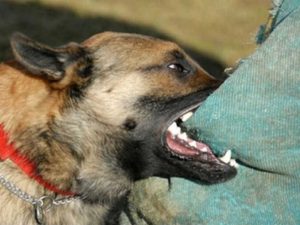
Image Source: Unsplash
Introduction
Dogs have long been considered man’s best friend, providing companionship, loyalty, and love. However, it is essential to recognize that owning a dog comes with its share of responsibilities and potential risks. Recent incidents involving dog attacks have raised concerns about the safety of certain breeds, such as the American bully XL. In this article, we will delve into the hidden dangers of raising dogs, explore the rise in dog attacks, and examine the controversy surrounding specific breeds.
The Alarming Rise in Dog Attacks

Over the past five years, dog attacks have witnessed a significant increase, with approximately 22,000 cases of injury by out-of-control dogs reported in 2022 alone. This number has risen by more than a third since 2018. Even more concerning is the rise in fatal dog attacks, with 10 recorded in 2022, six of which involved American bully XLs.
Understanding the American Bully XL
The American bully XL, a breed weighing over 60kg, has garnered attention due to its involvement in several fatal attacks. However, it is crucial to approach the topic with an open mind and acknowledge that not all bully XLs are dangerous. Many owners passionately defend their pets, emphasizing their gentle nature and dismissing claims of inherent aggression.
Responsible Ownership and Training
Owners of American bully XLs stress the importance of responsible ownership and rigorous training. While these dogs possess strength and power, proper handling and voice command training can ensure they remain well-behaved companions. Nevertheless, it is crucial to acknowledge that their size and strength demand particularly skilled training from their owners.
Tragic Incidents Shed Light on the Risks
Tragic incidents involving dog attacks have highlighted the potential risks associated with owning certain breeds. In January, a dog walker lost her life in an attack by her own American bully XL. Another incident in May resulted in the death of a man who was looking after his friend’s bully XL. These events have raised concerns among the public, leading to calls for the banning of this breed.
Debating Breed-Specific Legislation

The rising number of dog attacks, particularly involving American bully XLs, has sparked a heated debate about the effectiveness of breed-specific legislation. While some argue for a ban on certain breeds, others believe that focusing on the individual dog’s behavior is a more appropriate approach. Organizations like the RSPCA and the UK Bully Kennel Club advocate against breed-specific legislation, emphasizing the complexity of dog aggression and the need to consider each dog’s actions individually.
The Flawed Approach to Dog Aggression
The RSPCA asserts that a breed-focused approach to dog aggression is fundamentally flawed. They argue that focusing on the type of dog rather than their individual actions fails to address the root causes of aggression. Additionally, breed-specific legislation may lead to a shift in attention towards another breed, rather than addressing the underlying issue of responsible ownership and training.
Tracking Dog Attacks: The Role of Bully Watch
To shed light on the breeds responsible for dog attacks in the UK, a group called Bully Watch has been collating data from social media posts and news articles. Their research suggests that American bully XLs and bully mix breeds account for 45% of dog attacks in 2022. However, it is crucial to acknowledge that the data may be skewed, as smaller dog breeds are less likely to be reported.
Factors Contributing to Dog Aggression
While breed-specific characteristics may play a role in dog aggression, other factors such as breeding practices, training methods, and environmental influences must also be considered. It is essential to examine these contributing factors to gain a comprehensive understanding of the issue.
Irresponsible Breeding Practices
There is growing concern about irresponsible breeding practices, particularly in the case of American bully XLs. Inbreeding and a lack of pedigree maintenance have diluted the breed’s quality, potentially leading to genetic predispositions towards aggressive behavior. The importation of dogs from countries with lax regulations has also raised concerns about the origins and health of these animals.
Training and Socialization
Proper training and socialization are critical factors in shaping a dog’s behavior. Inadequate training and socialization can contribute to aggressive tendencies, regardless of the breed. Responsible owners understand the importance of early and consistent training, establishing boundaries, and exposing their dogs to various social situations.
The Role of Ownership and Responsibility

Ultimately, responsible ownership and understanding the responsibilities that come with owning a dog are vital in preventing dog attacks. Owners must be committed to providing proper training, socialization, and a safe environment for their dogs. This includes recognizing their dog’s individual needs, ensuring adequate exercise, and seeking professional help if behavioral issues arise.
Licensing and Oversight
To promote responsible ownership, there is a need for stricter licensing and oversight of dog breeders. This would ensure that puppies are raised in healthy environments and potential buyers have a clear understanding of their dog’s lineage. Stricter regulations could also discourage the importation of dogs from countries with inadequate breeding practices.
Conclusion
The rise in dog attacks and the involvement of certain breeds, such as the American bully XL, have raised concerns about the hidden dangers of raising dogs. While it is essential not to generalize an entire breed based on a few incidents, responsible ownership, proper training, and understanding the individual needs of each dog are crucial in preventing aggressive behavior. By addressing the factors contributing to dog aggression and promoting responsible ownership, we can create a safer environment for both dogs and humans
